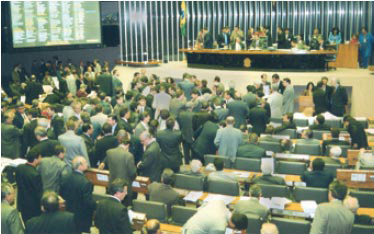PREVI and the complementary pension fund system
Pension Funds in Brazil constitute a system composed by three bodies of laws: the general one set up by the official Social Security (INSS), the particular ones authorized by the Social Security ( that apply to public servants who hold permanent offices), and the one that applies to complementary pension funds. Complementary pension funds in Brazil were regulated in 1977 but it was only during the decades of the 80ies and 90ies that the majority of the large pension funds set up by private companies were established.
The complementary pension plan system, also known as private pension funds, is based on a voluntary accumulation of funds for the purpose of warranting a future complementary or additional income to the beneficiary.
In Brazil, complementary pensions funds are offered by two groups of institutions; a group in which any individual can apply, called "open-ended complementary pension funds" - the examination of which is effected by the Superintendência de Seguros Privados (Susep - a governmental agency linked to Ministry of Finance), and the group of institutions named "close-ended complementary pension funds", like PREVI, where the enrollment is restricted to certain professional groups related to companies, union labors, or class entities. In that latter group, the examination, formerly made by Secretaria de Previdência Complementar (SPC), starting 2010 is now being carried out by Superintendência Nacional de Previdência Complementar Previc).
During those more than 30 years the complementary pension fund system evolved significantly and underwent several types of regulations. According to data from Associação Brasileira de Entidades Fechadas de Previdência Complementar - Abrapp - Brazil has today the eighth largest complementary pension fund system in the world. According to that association, by the end of 2009 that system counted with more than 372 close-ended pension fund entities that managed together nearly R$474 billion in investments, and represented 6,6 million active participants and their dependents, in addition to further 655 thousand participants who benefited from retirement an pension payments.

Under the complementary laws nº 108 and 109, of 2001, complementary pension funds gained a new impulse after aligning their procedures with those practiced internationally with regard to new instruments, new types of complementary pension fund entities, transparency, solid financial management an improvement in the governance of pension funds.